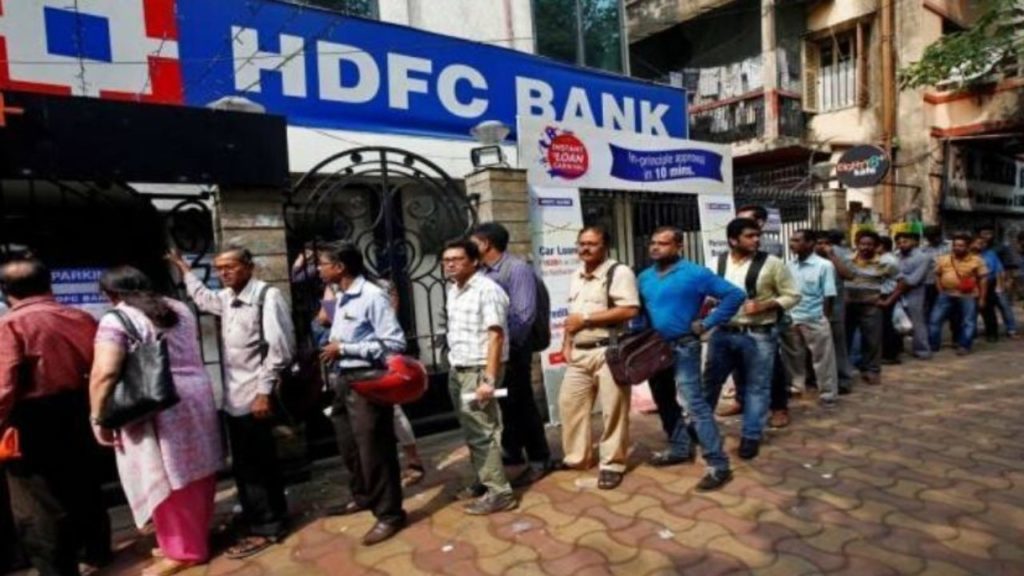HDFC Bank Allowed To Issue New Credit Cards After 8-Month Ban! But Some Restrictions Exists

The Reserve Bank of India (RBI) on Tuesday allowed HDFC Bank, Private sector lender HDFC Bank which has the largest credit card customer base with 1.49 crore to issue new credit cards after 8 months of imposing a ban as a penalty due to technical glitches, reported news agency Reuters.
However, RBI stated that its temporary ban on the lender for introducing new, digital initiative continues, the report added.
Earlier in July, said Parag Rao, Group Head – Payments, Consumer Finance, Digital Banking and IT, HDFC Bank expressed hope that the embargo on the bank would be lifted by the RBI soon and said the lender has been in continuous dialogue with the regulator.
“We have used the last six month period since December to introspect, reinvigorate and re-engineer for the future. We will use tech and digital to help us continue being dominant in the space and will get back to the market with a bang. We have the entire system ready and charged up,”
Parag Rao, Group Head – Payments, Consumer Finance, Digital Banking and IT, HDFC Bank
“We have very aggressive plans to get back to the market with a big bang. You will see a significant correction in the incremental market share,” Rao told reporters at a virtual press conference earlier in july.
Contents
HDFC To Submit A Board-Approved Letter
According to other reports, RBI has requested that HDFC Bank submit a board-approved letter certifying that it is continuing to comply with its IT examination report.
The RBI has warned multiple times and forcefully had to take severe action against the lender in December. HDFC Bank had repeated technological breakdowns over two years and thus should strengthen its systems following the regulator’s instructions.
Therefore restriction was put against any new credit card issuance and a bar on launching new digital ventures.
Efforts Taken By HDFC
Since the ban was imposed, the bank has been in close contact with the RBI and has strengthened its systems following the regulator’s instructions.
Recently, the bank’s head of consumer finance, digital banking and information technology, Parag Rao, said that it has used the last six months to “introspect, re-engineer and innovate” about the cards business, where it has 15.5 million customers.
The bank’s market share has been dropped as a result of the ban, but the actions taken internally have ensured that it continues to hold on to market share by spends, Parag Rao said.
Shashidhar Jagdishan, the managing director and chief executive of the largest private sector lender, further highlighted that HDFC Bank has met with 85 per cent of RBI’s technical requests.
He also said that the regulator now the ball is in the regulator’s court on when to lift the ban on issuing new credit cards. It was mentioned about a technology audit, and now when it is over, RBI is preparing to lift the ban and all the penalties.
“We have given a milestone to the regulator in terms of what are the things we are doing on technology, complying with their advisories and directives. We have covered a very significant portion as we speak. Almost 85 per cent of what we had to do has been covered,”
Shashidhar Jagdishan, the managing director and chief executive, HDFC.
“The ball is in the regulator’s court. As they deem fit, as they see that we are on the right track, I am sure at some point in time, they will lift the embargo,” he added.
RBI’s Harsh Penalties
RBI governor Shaktikanta Das stated in this month’s monetary policy review that the actions against corporations such as HDFC Bank, Mastercard, and American Express are nothing but to maintain regulatory compliance.
“Whenever there are deviations or violations of the regulatory guidelines, as the regulator, it is our job, it is our responsibility to ensure compliance.
“All our actions are an outcome of our keenness and our responsibility to ensure that regulatory guidelines are complied,” Das told reporters in the customary post-policy review press conference.

Comments are closed, but trackbacks and pingbacks are open.